DeWalt DW303MB Handleiding
DeWalt
Zaagmachine
DW303MB
Bekijk gratis de handleiding van DeWalt DW303MB (6 pagina’s), behorend tot de categorie Zaagmachine. Deze gids werd als nuttig beoordeeld door 39 mensen en kreeg gemiddeld 4.6 sterren uit 20 reviews. Heb je een vraag over DeWalt DW303MB of wil je andere gebruikers van dit product iets vragen? Stel een vraag
Pagina 1/6

INSTRUCTIVO DE OPERACIÓN, CENTROS DE SERVICIO Y PÓLIZA DE
GARANTÍA. ADVERTENCIA: LÉASE ESTE INSTRUCTIVO ANTES DE
USAR EL PRODUCTO.
Defi nitions: Safety Guidelines
The defi nitions below describe the level of severity for each signal word. Please read the
manual and pay attention to these symbols.
DANGER: will Indicates an imminently hazardous situation which, if not avoided,
result in .death or serious injury
WARNING: could Indicates a potentially hazardous situation which, if not avoided, result
in death or serious injury.
CAUTION: may Indicates a potentially hazardous situation which, if not avoided, result
in minor or moderate injury.
NOTICE: may Indicates a practice which, if not avoided, not related to personal injury
result in property damage.
IF YOU HAVE ANY QUESTIONS OR COMMENTS ABOUT THIS OR ANY D WALT TOOL, CALL US E
TOLL FREE AT: 1-800-4-DEWALT (1-800-433-9258).
WARNING: To reduce the risk of injury, read the instruction manual.
General Power Tool Safety Warnings
WARNING! Read all safety warnings and all instructions. Failure to follow the warnings
and instructions may result in electric shock, fi re and/or serious injury.
SAVE ALL WARNINGS AND INSTRUCTIONS
FOR FUTURE REFERENCE
The term “power tool” in the warnings refers to your mains-operated (corded) power tool or battery-
operated (cordless) power tool.
1) WORK AREA SAFETY
a) Cluttered or dark areas invite accidents.Keep work area clean and well lit.
b) Do not operate power tools in explosive atmospheres, such as in the presence of
fl ammable liquids, gases or dust. Power tools create sparks which may ignite the dust or
fumes.
c) Keep children and bystanders away while operating a power tool. Distractions can cause
you to lose control.
2) ELECTRICAL SAFETY
a) Power tool plugs must match the outlet. Never modify the plug in any way. Do not use
any adapter plugs with earthed (grounded) power tools. Unmodifi ed plugs and matching
outlets will reduce risk of electric shock.
b) Avoid body contact with earthed or grounded surfaces such as pipes, radiators,
ranges and refrigerators. There is an increased risk of electric shock if your body is earthed or
grounded.
c) Do not expose power tools to rain or wet conditions. Water entering a power tool will
increase the risk of electric shock.
d) Do not abuse the cord. Never use the cord for carrying, pulling or unplugging the power
tool. Keep cord away from heat, oil, sharp edges or moving parts. Damaged or entangled
cords increase the risk of electric shock.
e) When operating a power tool outdoors, use an extension cord suitable for outdoor use.
Use of a cord suitable for outdoor use reduces the risk of electric shock.
f) If operating a power tool in a damp location is unavoidable, use a ground fault circuit
interrupter (GFCI) protected supply. Use of a GFCI reduces the risk of electric shock.
3) PERSONAL SAFETY
a) Stay alert, watch what you are doing and use common sense when operating a power
tool. Do not use a power tool while you are tired or under the infl uence of drugs,
alcohol or medication. A moment of inattention while operating power tools may result in
serious personal injury.
b) Use personal protective equipment. Always wear eye protection. Protective equipment
such as dust mask, non-skid safety shoes, hard hat, or hearing protection used for appropriate
conditions will reduce personal injuries.
c) Prevent unintentional starting. Ensure the switch is in the off position before connecting
to power source and/or battery pack, picking up or carrying the tool. Carrying power
tools with your fi nger on the switch or energizing power tools that have the switch on invites
accidents.
d) Remove any adjusting key or wrench before turning the power tool on. A wrench or a key
left attached to a rotating part of the power tool may result in personal injury.
e) Do not overreach. Keep proper footing and balance at all times. This enables better
control of the power tool in unexpected situations.
f) Dress properly. Do not wear loose clothing or jewelry. Keep your hair, clothing and
gloves away from moving parts. Loose clothes, jewelry or long hair can be caught in moving
parts.
g) If devices are provided for the connection of dust extraction and collection facilities,
ensure these are connected and properly used. Use of dust collection can reduce dust-
related hazards.
4) POWER TOOL USE AND CARE
a) Do not force the power tool. Use the correct power tool for your application. The correct
power tool will do the job better and safer at the rate for which it was designed.
b) Do not use the power tool if the switch does not turn it on and off. Any power tool that
cannot be controlled with the switch is dangerous and must be repaired.
c) Disconnect the plug from the power source and/or the battery pack from the power
tool before making any adjustments, changing accessories, or storing power tools.
Such preventive safety measures reduce the risk of starting the power tool accidentally.
d) Store idle power tools out of the reach of children and do not allow persons unfamiliar
with the power tool or these instructions to operate the power tool. Power tools are
dangerous in the hands of untrained users.
e) Maintain power tools. Check for misalignment or binding of moving parts, breakage of
parts and any other condition that may affect the power tool’s operation. If damaged,
have the power tool repaired before use. Many accidents are caused by poorly maintained
power tools.
f) Keep cutting tools sharp and clean. Properly maintained cutting tools with sharp cutting
edges are less likely to bind and are easier to control.
g) Use the power tool, accessories and tool bits, etc. in accordance with these instructions,
taking into account the working conditions and the work to be performed. Use of the
power tool for operations different from those intended could result in a hazardous situation.
5) SERVICE
a) Have your power tool serviced by a qualifi ed repair person using only identical
replacement parts. This will ensure that the safety of the power tool is maintained.
Additional Specifi c Safety Rules
• Hold power tool by insulated gripping surfaces when performing an operation where
the cutting accessory may contact hidden wiring or its own cord. Cutting accessory
contacting a “live” wire may make exposed metal parts of the tool “live” and could give the
operator an electric shock
• Use clamps or another practical way to secure and support the workpiece to a stable
platform. Holding the work by hand or against your body leaves it unstable and may lead to loss
of control.
• Do not operate this tool for long periods of time. Vibration caused by the operating action
of this tool may cause permanent injury to fi ngers, hands, and arms. Use gloves to provide extra
cushion, take frequent rest periods, and limit daily time of use.
• Air vents often cover moving parts and should be avoided. Loose clothes, jewelry or long
hair can be caught in moving parts.
• An extension cord must have adequate wire size (AWG or American Wire Gauge) for
safety. The smaller the gauge number of the wire, the greater the capacity of the cable, that is
16 gauge has more capacity than 18 gauge. An undersized cord will cause a drop in line voltage
resulting in loss of power and overheating. When using more than one extension to make up
the total length, be sure each individual extension contains at least the minimum wire size. The
following table shows the correct size to use depending on cord length and nameplate ampere
rating. If in doubt, use the next heavier gauge. The smaller the gauge number, the heavier the
cord.
Minimum Gauge for Cord Sets
Ampere Rating
Volts Total Length of Cord in Feet (meters)
120V 25 (7.6) 50 (15.2) 100 (30.5) 150 (45.7)
240V 50 (15.2) 100 (30.5) 200 (61.0) 300 (91.4)
More
Than
Not More
Than AWG
0 6 18 16 16 14
6 10 18 16 14 12
10 12 16 16 14 12
12 16 14 12 Not Recommended
WARNING: ALWAYS use safety glasses. Everyday eyeglasses are NOT safety glasses. Also use
face or dust mask if cutting operation is dusty. ALWAYS WEAR CERTIFIED SAFETY EQUIPMENT:
• ANSI Z87.1 eye protection (CAN/CSA Z94.3),
• ANSI S12.6 (S3.19) hearing protection,
• NIOSH/OSHA/MSHA respiratory protection.
WARNING: Some dust created by power sanding, sawing, grinding, drilling, and other
construction activities contains chemicals known to the State of California to cause cancer, birth
defects or other reproductive harm. Some examples of these chemicals are:
• lead from lead-based paints,
• crystalline silica from bricks and cement and other masonry products, and
• arsenic and chromium from chemically-treated lumber.
Your risk from these exposures varies, depending on how often you do this type of work. To reduce
your exposure to these chemicals: work in a well ventilated area, and work with approved safety
equipment, such as those dust masks that are specially designed to fi lter out microscopic particles.
• Avoid prolonged contact with dust from power sanding, sawing, grinding, drilling, and
other construction activities. Wear protective clothing and wash exposed areas with
soap and water. Allowing dust to get into your mouth, eyes, or lay on the skin may promote
absorption of harmful chemicals.
WARNING: Use of this tool can generate and/or disperse dust, which may cause serious and
permanent respiratory or other injury. Always use NIOSH/OSHA approved respiratory protection
appropriate for the dust exposure. Direct particles away from face and body.
WARNING: Always wear proper personal hearing protection that conforms to ANSI
S12.6 (S3.19) during use. Under some conditions and duration of use, noise from this product
may contribute to hearing loss.
• The label on your tool may include the following symbols. The symbols and their defi nitions are
as follows:
V ..................... volts A ........................ amperes
Hz ................... hertz W ....................... watts
min .................minutes or AC ............alternating current
or DC .....direct current or AC/DC .....alternating or direct current
...................Class I Construction no.......................no load speed
.....
.....
.....
........
...
...
......
...
...
......
...
...
.......
....
....
.......
...
...
.....
..
..
..(grounded) n .........................rated speed
...................Class II Construction ....................... earthing terminal
(double insulated) .......................safety alert symbol
…/min ............per minute BPM ...................beats per minute
IPM .................impacts per minute RPM ...................revolutions per minute
SPM ...............strokes per minute sfpm ...................surface feet per minute
D WALT Industrial Tool Co., 701 East Joppa Road, Baltimore, MD 21286E
(JAN14) Part No. N257120 DW303, DW303M, DW304P Copyright © 2004, 2012, 2014
The following are trademarks for one or more D WALT power tools: the yellow and black color scheme; the “D” E
shaped air intake gril; the array of pyramids on the handgrip; the kit box confi guration; and the array of lozenge-
shaped humps on the surface of the tool.
INSTRUCTION MANUAL
GUIDE D’UTILISATION
MANUAL DE INSTRUCCIONES
DW303, DW303M, DW304P
VS Reciprocating Saw
Scies alternatives à régulateur de vitesse
Sierra reciprocante VV
If you have questions or comments, contact us.
Pour toute question ou tout commentaire, nous contacter.
Si tiene dudas o comentarios, contáctenos.
1-800-4-D WALT • www.dewalt.comE

SAVE THESE INSTRUCTIONS FOR FUTURE USE
Motor
Be sure your power supply agrees with the nameplate marking. Voltage decrease of more than
10% will cause loss of power and overheating. DEWALT tools are factory tested; if this tool does not
operate, check power supply.
COMPONENTS (Fig. 1-3)
WARNING: Never modify the power tool or any part of it. Damage or personal injury could result.
A. Trigger switch E. balde clamp
B. Set screw F. Blade
C. Blade shank G. Pin
D. Reciprocating shaft H. Blade clamp release lever
Switch (Variable Speed) (Fig. 1)
The variable speed trigger switch (A) will give you added versatility. The further the trigger is depressed
the higher the speed of the saw. To turn the tool “OFF” release the trigger.
CAUTION: Use of very slow speed is recommended only for begin ning a cut. Prolonged use at
very slow speed may damage your saw.
ASSEMBLY AND ADJUSTMENTS
WARNING: TO REDUCE THE RISK OF INJURY, TURN UNIT OFF AND DISCONNECT IT
FROM POWER SOURCE BEFORE INSTALLING AND REMOVING ACCESSORIES,
BEFORE ADJUSTING OR WHEN MAKING REPAIRS. An accidental start-up can cause injury.
Blade Clamping DW303 (Fig. 2)
CAUTION: TURN OFF AND UNPLUG SAW.
To install blade into saw:
1. Loosen set screw(B).
2. Insert blade shank (C) from the front between the reciprocating shaft (D) and the blade clamp
(E). Locate hole in blade (F) over pin (G) on reciprocating shaft.
3. Tighten set screw. If the blade should break off and the shank does not come out of the clamp,
be sure the set screw is loose and eject the shank with a nail or pointed object.
CAUTION: THE BLADE GUARD IS THERE FOR YOUR SAFETY. DO NOT REMOVE IT.
Blade Clamp Release Lever (DW303M and DW304P, Fig. 3)
CAUTION: TURN OFF AND UNPLUG SAW.
To install blade into saw:
1. Pull blade clamp release lever (H) up.
2. Insert blade shank from the front.
3. Push blade clamp release lever down.
To remove blade from saw:
1. Open blade clamp release lever.
2. Remove blade.
CAUTION: THE BLADE GUARD IS THERE FOR YOUR SAFETY. DO NOT REMOVE IT.
OPERATION
WARNING: To reduce the risk of injury, turn unit off and disconnect it from power
source before installing and removing accessories, before adjusting or when making
repairs. An accidental start-up can cause injury.
Cutting with Blade in Horizontal Position
(DW304P Only, Fig. 4A)
Installing a blade in the horizontal orientation allows cutting close to fl oors, walls or ceilings where
limited clearance is available. Ensure that the Blade Guard is pressed against the framing to avoid
kickback.
Flush-To Cutting (Fig. 5)
The compact design of the saw motor housing and spindle housing permits extremely close cutting
to fl oors, corners and other diffi cult areas.
CAUTION: When sawing into walls, fl oors or wherever “live” electrical wires may be encountered,
DO NOT TOUCH ANY FRONT METAL PARTS OF THE TOOL! Hold the tool only by the plastic
handle and housing to prevent electric shock if you saw into a “live” wire.
CAUTION: Always wear eye protection while operating this power tool.
Wood Cutting (Fig. 6)
Before cutting any type of wood, be sure it is fi rmly anchored or clamped to prevent slipping. Place
blade lightly against work to be cut, switch on saw motor and allow it to obtain maximum speed
before applying pressure. Always hold saw fi rmly with both hands while cutting. Whenever possible,
the saw shoe must be held fi rmly against the material being cut. This will prevent the saw from
jumping or vibrating and minimize blade breakage.
Metal Cutting (Fig. 7)
This unit has different metal cutting capacities depending upon type of blade used and the metal
to be cut. Use a fi ner blade for ferrous metals and a coarse blade for non-ferrous materials. In thin
gauge sheet metals it is best to clamp wood to both sides of sheet. This will insure a clean cut
without excess vibration or tearing of metal. Always remember not to force cutting blade as this
reduces blade life and causes costly blade breakage.
NOTE: It is generally recommended that when cutting metals you should spread a thin fi lm of oil or
other coolant along the line ahead of the saw cut for easier operation and longer blade life.
Pocket Cutting (Fig. 8) (Wood Only)
The initial step in pocket cutting is to measure the surface area to be cut and mark clearly with a
pencil, chalk or scriber. Insert pocket cutting blade in blade clamp and tighten blade clamp securely.
Next, tip the saw backward until the back edge of the shoe is resting on the work surface. Now
switch motor on, always permitting blade to attain maximum speed. Grip handle steadily and begin
a slow, deliberate upward swing with the handle of the saw. Blade will begin to feed into material.
Always be sure blade is completely through material before continuing with pocket cut.
NOTE: In areas where blade visibilty is limited, use the edge of the saw shoe as a guide. Lines for
any given cut should be extended beyond edge of cut to be made.
MAINTENANCE
WARNING: To reduce the risk of injury, turn unit off and disconnect it from power
source before installing and removing accessories, before adjusting or when making
repairs. An accidental start-up can cause injury.
Cleaning
WARNING: Blow dirt and dust out of all air vents with clean, dry air at least once a week. To
minimize the risk of eye injury, always wear ANSI Z87.1 approved eye protection when performing
this.
WARNING: Never use solvents or other harsh chemicals for cleaning the non-metallic parts of
the tool. These chemicals may weaken the plastic materials used in these parts. Use a cloth
dampened only with water and mild soap. Never let any liquid get inside the tool; never immerse any
part of the tool into a liquid.
Accessories
WARNING: Since accessories, other than those offered by D WALT, have not been tested with E
this product, use of such accessories with this tool could be hazardous. To reduce the risk of injury,
only DEWALT recommended accessories should be used with this product.
Recommended accessories for use with your tool are available at extra cost from your local dealer or
authorized service center. If you need assistance in locating any accessory, please contact DEWALT
Industrial Tool Co., 701 East Joppa Road, Baltimore, MD 21286, call 1-800-4-DEWALT (1-800-433-
9258) or visit our website: www.dewalt.com.
Repairs
To assure product SAFETY and RELIABILITY, repairs, maintenance and adjustment (including brush
inspection and replacement) should be performed by a DEWALT factory service center, a DEWALT
authorized service center or other qualifi ed service personnel. Always use identical replacement
parts.
FIG. 7
FIG. 4
FIG. 6
FIG. 1
H
FIG. 3
FIG. 8
ROCK TOOL UP TO NORMAL CUTTING POSITION
AFTER BLADE HAS CUT THROUGH MATERIAL
STARTING POSITION FOR POCKET CUTTING
POSITION DE DÉPART POUR LES COUPES
EN RETRAIT
POSICION DE INICIO PARA EL CORTE DE BOLSILLO
BERCER L’OUTIL EN POSITION NORMALE DE
COUPE ÁPRES AVOIR TRAVERSÉ MATÉRIAU AVEC
LA LAME
BALANCEE LA HERRAMIENTA HASTA LA
POSICION DE CORTE NORMAL DESPUES DE HACER
EL CORTE A TRAVES DEL MATERIAL
A
FIG. 5
B
C
E
D
B
FIG. 2
F
G
FIG. 4A

Défi nitions: lignes directrices en
matière de sécurité
Les défi nitions ci-dessous décrivent le niveau de danger pour chaque
mot-indicateur employé. Lire le mode d’emploi et porter une attention particulière
à ces symboles.
DANGER: indique une situation dangereuse imminente qui, si elle n’est pas
évitée, la entraînera mort ou des blessures graves.
AVERTISSEMENT: indique une situation potentiellement dangereuse qui, si
elle n’est pas évitée, entraîner lapourrait mort ou des blessures graves.
ATTENTION: indique une situation potentiellement dangereuse qui, si elle
n’est pas évitée, entraîner des pourrait blessures légères ou modérées.
AVIS : indique une pratique ne posant aucun risque de dommages corporels
mais qui par contre, si rien n’est fait pour l’éviter, poser despourrait risques de
dommages matériels.
POUR TOUTE QUESTION OU REMARQUE AU SUJET DE CET OUTIL OU DE TOUT AUTRE OUTIL
DEWALT, COMPOSEZ LE NUMÉRO SANS FRAIS : 1-800-4-D WALT (1-800-433-9258)E.
AVERTISSEMENT : afi n de réduire le risque de blessures, lire le mode d’emploi de l’outil.
Avertissements de sécurité généraux pour les outils
électriques
AVERTISSEMENT ! Lire tous les avertissements de sécurité et toutes les directives.
Le non-respect des avertissements et des directives pourrait se solder par un choc électrique,
un incendie et/ou une blessure grave.
CONSERVER TOUS LES AVERTISSEMENTS ET TOUTES LES
DIRECTIVES POUR UN USAGE ULTÉRIEUR
Le terme « outil électrique » cité dans les avertissements se rapporte à votre outil électrique à
alimentation sur secteur (avec fi l) ou par piles (sans fi l).
1) SÉCURITÉ DU LIEU DE TRAVAIL
a) Tenir l’aire de travail propre et bien éclairée. Les lieux encombrés ou sombres sont propices
aux accidents.
b) Ne pas faire fonctionner d’outils électriques dans un milieu défl agrant, tel qu’en
présence de liquides, de gaz ou de poussières infl ammables. Les outils électriques
produisent des étincelles qui pourraient enfl ammer la poussière ou les vapeurs.
c) Éloigner les enfants et les personnes à proximité pendant l’utilisation d’un outil
électrique. Une distraction pourrait en faire perdre la maîtrise à l’utilisateur.
2) SÉCURITÉ EN MATIÈRE D’ÉLECTRICITÉ
a) Les fi ches des outils électriques doivent correspondre à la prise. Ne jamais modifi er la
fi che d’aucune façon. Ne jamais utiliser de fi che d’adaptation avec un outil électrique
mis à la terre. Le risque de choc électrique sera réduit par l’utilisation de fi ches non modifi ées
correspondant à la prise.
b) Éviter tout contact physique avec des surfaces mises à la terre comme des tuyaux, des
radiateurs, des cuisinières et des réfrigérateurs. Le risque de choc électrique est plus élevé
si votre corps est mis à la terre.
c) Ne pas exposer les outils électriques à la pluie ou à l’humidité. La pénétration de l’eau
dans un outil électrique augmente le risque de choc électrique.
d) Ne pas utiliser le cordon de façon abusive. Ne jamais utiliser le cordon pour transporter,
tirer ou débrancher un outil électrique. Tenir le cordon éloigné de la chaleur, de l’huile,
des bords tranchants et des pièces mobiles. Les cordons endommagés ou enchevêtrés
augmentent les risques de choc électrique.
e) Pour l’utilisation d’un outil électrique à l’extérieur, se servir d’une rallonge convenant à
cette application. L’utilisation d’une rallonge conçue pour l’extérieur réduira les risques de choc
électrique.
f) S’il est impossible d’éviter l’utilisation d’un outil électrique dans un endroit humide,
brancher l’outil dans une prise ou sur un circuit d’alimentation dotés d’un disjoncteur
de fuite à la terre (GFCI). L’utilisation de ce type de disjoncteur réduit les risques de choc
électrique.
Register Online
Thank you for your purchase. Register your product now for:
• WARRANTY SERVICE: Registering your product will help you obtain more effi cient warranty
service in case there is a problem with your product.
• CONFIRMATION OF OWNERSHIP: In case of an insurance loss, such as fi re, fl ood or theft,
your registration of ownership will serve as your proof of purchase.
• FOR YOUR SAFETY: Registering your product will allow us to contact you in the unlikely event
a safety notifi cation is required under the Federal Consumer Safety Act.
Register online at www.dewalt.com/register.
Three Year Limited Warranty
DEWALT will repair, without charge, any defects due to faulty materials or workmanship for three
years from the date of purchase. This warranty does not cover part failure due to normal wear or
tool abuse. For further detail of warranty coverage and warranty repair information, visit www.dewalt.
com or call 1-800-4-DEWALT (1-800-433-9258). This warranty does not apply to accessories or
damage caused where repairs have been made or attempted by others. This warranty gives you
specifi c legal rights and you may have other rights which vary in certain states or provinces.
In addition to the warranty, DEWALT tools are covered by our:
1 YEAR FREE SERVICE
DEWALT will maintain the tool and replace worn parts caused by normal use, for free, any time
during the fi rst year after purchase.
90 DAY MONEY BACK GUARANTEE
If you are not completely satisfi ed with the performance of your DEWALT Power Tool, Laser, or Nailer
for any reason, you can return it within 90 days from the date of purchase with a receipt for a full
refund – no questions asked.
LATIN AMERICA: This warranty does not apply to products sold in Latin America. For products
sold in Latin America, see country specifi c warranty information contained in the packaging, call the
local company or see website for warranty information.
FREE WARNING LABEL REPLACEMENT: If your warning labels become illegible or are missing,
call 1-800-4-DEWALT (1-800-433-9258) for a free replacement.
3) SÉCURITÉ PERSONNELLE
a) Être vigilant, surveiller le travail effectué et faire preuve de jugement lorsqu’un outil
électrique est utilisé. Ne pas utiliser d’outil électrique en cas de fatigue ou sous
l’infl uence de drogues, d’alcool ou de médicaments. Un simple moment d’inattention en
utilisant un outil électrique peut entraîner des blessures corporelles graves.
b) Utiliser des équipements de protection individuelle. Toujours porter une protection
oculaire. L’utilisation d’équipements de protection comme un masque antipoussière, des
chaussures antidérapantes, un casque de sécurité ou des protecteurs auditifs lorsque la situation
le requiert réduira les risques de blessures corporelles.
c) Empêcher les démarrages intempestifs. S’assurer que l’interrupteur se trouve à la
position d’arrêt avant de relier l’outil à une source d’alimentation et/ou d’insérer un
bloc-piles, de ramasser ou de transporter l’outil. Transporter un outil électrique alors que le
doigt repose sur l’interrupteur ou brancher un outil électrique dont l’interrupteur est à la position
de marche risque de provoquer un accident.
d) Retirer toute clé de réglage ou clé avant de démarrer l’outil. Une clé ou une clé de réglage
attachée à une partie pivotante de l’outil électrique peut provoquer des blessures corporelles.
e) Ne pas trop tendre les bras. Conserver son équilibre en tout temps. Cela permet de
mieux maîtriser l’outil électrique dans les situations imprévues.
f) S’habiller de manière appropriée. Ne pas porter de vêtements amples ni de bijoux.
Garder les cheveux, les vêtements et les gants à l’écart des pièces mobiles. Les
vêtements amples, les bijoux ou les cheveux longs risquent de rester coincés dans les pièces
mobiles.
g) Si des composants sont fournis pour le raccordement de dispositifs de dépoussiérage
et de ramassage, s’assurer que ceux-ci sont bien raccordés et utilisés. L’utilisation d’un
dispositif de dépoussiérage peut réduire les dangers engendrés par les poussières.
4) UTILISATION ET ENTRETIEN D’UN OUTIL ÉLECTRIQUE
a) Ne pas forcer un outil électrique. Utiliser l’outil électrique approprié à l’application.
L’outil électrique approprié effectuera un meilleur travail, de façon plus sûre et à la vitesse pour
laquelle il a été conçu.
b) Ne pas utiliser un outil électrique dont l’interrupteur est défectueux. Tout outil électrique
dont l’interrupteur est défectueux est dangereux et doit être réparé.
c) Débrancher la fi che de la source d’alimentation et/ou du bloc-piles de l’outil électrique
avant de faire tout réglage ou changement d’accessoire ou avant de ranger l’outil. Ces
mesures préventives réduisent les risques de démarrage accidentel de l’outil électrique.
d) Ranger les outils électriques hors de la portée des enfants et ne permettre à aucune
personne n’étant pas familière avec un outil électrique ou son mode d’emploi
d’utiliser cet outil. Les outils électriques deviennent dangereux entre les mains d’utilisateurs
inexpérimentés.
e) Entretien des outils électriques. Vérifi er si les pièces mobiles sont mal alignées ou
coincées, si des pièces sont brisées ou présentent toute autre condition susceptible
de nuire au bon fonctionnement de l’outil électrique. En cas de dommage, faire réparer
l’outil électrique avant toute nouvelle utilisation. Beaucoup d’accidents sont causés par
des outils électriques mal entretenus.
f) S’assurer que les outils de coupe sont aiguisés et propres. Les outils de coupe bien
entretenus et affûtés sont moins susceptibles de se coincer et sont plus faciles à maîtriser.
g) Utiliser l’outil électrique, les accessoires, les forets, etc. conformément aux présentes
directives en tenant compte des conditions de travail et du travail à effectuer.
L’utilisation d’un outil électrique pour toute opération autre que celle pour laquelle il a été conçu
est dangereuse.
5) RÉPARATION
a) Faire réparer l’outil électrique par un réparateur professionnel en n’utilisant que des
pièces de rechange identiques. Cela permettra de maintenir une utilisation sécuritaire de
l’outil électrique.
Mesures de sécurité additionnelles et spécifi ques à l’outil
• Tenir l’outil électrique par les surfaces isolées prévues à cet effet pendant toute
utilisation où l’organe de coupe pourrait entrer en contact avec des fi ls électriques
cachés ou son propre cordon. Tout contact de l’organe de coupe avec un fi l sous tension
mettra les parties métalliques exposées de l’outil électrique sous tension et électrocutera
l’utilisateur.
• Utiliser des serre-joints, ou tout autre moyen, pour fi xer et immobiliser le matériau sur
une surface stable. Tenir la pièce à la main ou contre son corps offre une stabilité insuffi sante
qui pourrait vous en faire perdre le contrôle.
• Ne pas utiliser cet outil pendant des périodes prolongées. Les vibrations causées par
l’action de fonctionnement de l’outil peuvent blesser en permanence les doigts, les mains et les
bras. Porter des gants pour amortir les vibrations, faire des pauses fréquentes et limiter le temps
d’utilisation quotidien de l’outil.
• Prendre des précautions à proximité des évents, car ils cachent des pièces mobiles.
Vêtements amples, bijoux ou cheveux longs risquent de rester coincés dans ces pièces mobiles.
• Pour la sécurité de l’utilisateur, utiliser une rallonge de calibre adéquat (AWG, American
Wire Gauge [calibrage américain normalisé des fi ls électriques]). Plus le calibre est
petit, et plus sa capacité est grande. Un calibre16, par exemple, a une capacité supérieure
à un calibre18. L’usage d’une rallonge de calibre insuffi sant causera une chute de tension qui
entraînera perte de puissance et surchauffe. Si plus d’une rallonge est utilisée pour obtenir une
certaine longueur, s’assurer que chaque rallonge présente au moins le calibre de fi l minimum.
Le tableau ci-dessous illustre les calibres à utiliser selon la longueur de rallonge et l’intensité
nominale indiquée sur la plaque signalétique. En cas de doute, utiliser le calibre suivant. Plus le
calibre est petit, plus la rallonge peut supporter de courant.
Calibres minimaux des rallonges
Intensité (en ampères) volts Longueur totale de cordon en mètres (pieds)
120 V 7,6 (25) 15,2 (50) 30,5 (100) 45,7 (150)
240 V 15,2 (50) 30,5 (100) 61,0 (200) 91,4 (300)
Supérieur à Inférieur à AWG
0 6 18 16 16 14
6 10 18 16 14 12
10 12 16 16 14 12
12 16 14 12 Non recommandé
AVERTISSEMENT: porter SYSTEMATIQUEMENT des lunettes de protection. Les lunettes
courantes NE sont PAS des lunettes de protection. Utiliser aussi un masque antipoussières si la
découpe doit en produire beaucoup. PORTER SYSTÉMATIQUEMENT UN ÉQUIPEMENT DE
SÉCURITÉ HOMOLOGUÉ:
• Protection oculaire ANSI Z87.1 (CAN/CSA Z94.3);
• Protection auditive ANSI S12.6 (S3.19);
• Protection des voies respiratoires NIOSH/OSHA/MSHA.
AVERTISSEMENT: les scies, meules, ponceuses, perceuses ou autres outils de construction
peuvent produire des poussières contenant des produits chimiques reconnus par l’État californien
pour causer cancers, malformations congénitales ou être nocifs au système reproducteur. Parmi
ces produits chimiques, on retrouve:
• Le plomb dans les peintures à base de plomb;
• La silice cristallisée dans les briques et le ciment, ou autres produits de maçonnerie; et
• L’arsenic et le chrome dans le bois ayant subi un traitement chimique.
Le risque associé à de telles expositions varie selon la fréquence à laquelle on effectue ces travaux.
Pour réduire toute exposition à ces produits: travailler dans un endroit bien aéré, en utilisant du
matériel de sécurité homologué, tel un masque antipoussières spécialement conçu pour fi ltrer les
particules microscopiques.
• Limiter toute exposition prolongée avec les poussières provenant du ponçage, sciage,
meulage, perçage ou toute autre activité de construction. Porter des vêtements de
protection et nettoyer à l’eau savonneuse les parties du corps exposées. Le fait de laisser
la poussière pénétrer dans la bouche, les yeux ou la peau peut favoriser l’absorption de produits
chimiques dangereux.
AVERTISSEMENT: cet outil peut produire et/ou répandre de la poussière susceptible de causer
des dommages sérieux et permanents au système respiratoire. Utiliser systématiquement un
appareil de protection des voies respiratoires homologué par le NIOSH ou l’OSHA. Diriger les
particules dans le sens opposé au visage et au corps.
Product specificaties
| Merk: | DeWalt |
| Categorie: | Zaagmachine |
| Model: | DW303MB |
Heb je hulp nodig?
Als je hulp nodig hebt met DeWalt DW303MB stel dan hieronder een vraag en andere gebruikers zullen je antwoorden
Handleiding Zaagmachine DeWalt
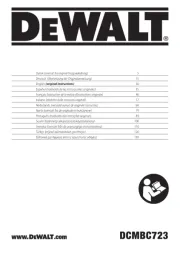
4 Juli 2025

11 Februari 2025

2 Januari 2025

2 Januari 2025

2 Januari 2025

22 November 2024

11 September 2024

15 Juli 2024

15 Juli 2024

15 Juli 2024
Handleiding Zaagmachine
- RIDGID
- Craftsman
- Dolmar
- Robust
- Bestgreen
- Turbo-Silent
- NEO Tools
- Echo
- Troy-Bilt
- Yato
- Clarke
- Narex
- Avantco
- Ferrex
- Sun Joe
Nieuwste handleidingen voor Zaagmachine
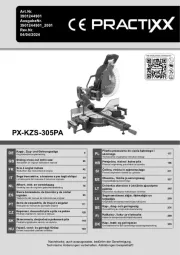
30 Juli 2025
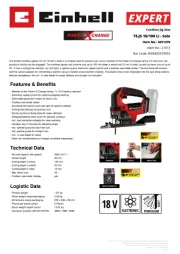
29 Juli 2025
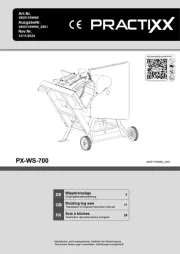
29 Juli 2025
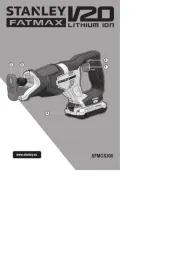
29 Juli 2025
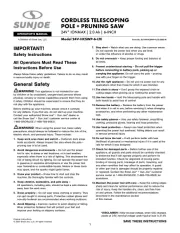
29 Juli 2025
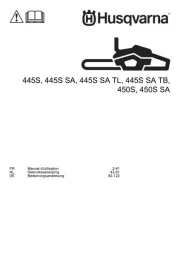
28 Juli 2025
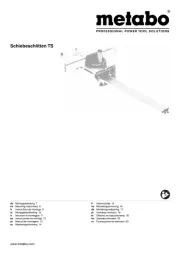
23 Juli 2025
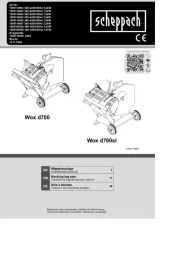
21 Juli 2025
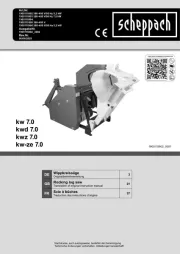
21 Juli 2025
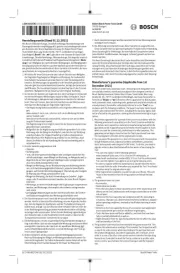
20 Juli 2025